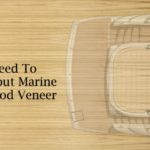If you’re interested in doing up or renovating your boat or yacht, you will need a marine grade wood veneer. Wood veneer is a preferred and stunning alternative for the interior decoration of yachts, boats and other watercraft.
With the right grain, quality and colour, wood veneers can impart a different dimension to your vessels. But what kind of veneer should you opt for? Is it important to choose a marine grade wood veneer and is it different from a non-marine veneer?
This article will tell you about the basics of marine grade wood veneer and its composition. We’ll also discuss some of its attributes, which are also its key differentiators.
The Composition Of Marine Grade Wood Veneer
It’s usually the more expensive and rare woods such as Ash, Teak, Redwood and Mahogany from which most of the Marine Grade Veneer is made. These woods are chosen as they have beautiful colours, dense structure and a very fine grain.
At least 2-3 layers of hardwood are carefully glued together ensuring that no air pockets or inconsistencies remain. If this process has any flaws, the resulting veneer gets vulnerable to temperature changes and moisture making it prone to rotting
The backing material of the marine grade veneer must be varnished and finished to make it water resistant. The material chosen for the backing is carefully chosen according to its intended application. For instance, plywood backing is used for building furniture and cabinets. A flexible epoxy-based resin is usually the backing material for walls or curved surfaces.
What attributes make Marine Grade Wood Veneer different from a Standard Wood Veneer?
Marine wood veneer has some key differentiators when compared to non-marine veneers.
- 1. Moisture and temperature resistance –
Dense hardwood and specialised surface treatments are used to make the veneer resistant to moisture and temperature changes. This is perhaps one of the most important attributes of the Marine Grade Veneer and eliminates the likelihood of rot, shrinkage or other damage occurring due to fluctuation in temperature and moisture.
A standard non-marine wood veneer lacks this resistance, as it does not undergo this special surface treatment. - 2. Resistance to UV rays and sun damage –
Most of the marine vessels spend a lot of time in tropical areas and in docks, completely exposed to the harsh sun. This often leads to bleaching and Sun Damage. To counter this problem, most marine-grade veneer is treated and coated with formulations, which imparts it UV resistance. This special treatment prevents bleaching thus ensuring a long –lasting colour.
A non marine-grade veneer undergoes no such treatment and is prone to the wear and tear associated with elements. - 3. Strong adhesives –
Exterior-grade glue and epoxy are used in marine grade veneers making them durable and long lasting. This glue also diminishes the chances of peeling and veneer failure.
The non-marine veneers use interior grade glues, which would lead them to fail in extreme conditions a marine vessel is exposed to
Clearly, even though a marine grade veneer is more expensive, the benefit it has justifies any difference in the cost. After all, its not everyday that you build or renovate your yacht or boat.
If you need marine grade wood veneer for your boat or yacht, contact Starwood Veneers, the experts In Marine Grade Veneers. With impeccable craftsmanship, superior quality and last but not the least, decades of experience servicing the Yacht manufacturers around the globe, they are an ideal choice.

